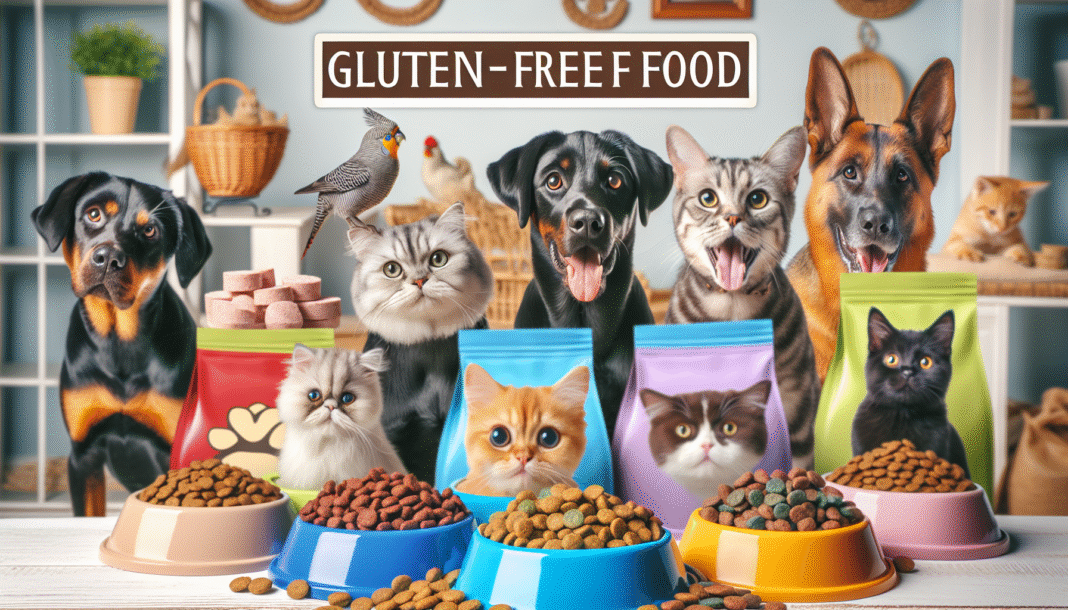When it comes to your beloved pets, you want to ensure they receive the best possible nutrition. For many pets, gluten can be a common allergen, causing a range of health issues. This article will explore the causes of gluten sensitivities, the benefits of gluten-free diets, symptoms to watch for, and top gluten-free pet food options that can help keep your furry friends healthy.
Understanding Gluten Sensitivity in Pets
What Is Gluten?
Gluten is a protein found in grains such as wheat, barley, and rye. While many pets digest these grains without issues, others may have sensitivities or allergies to gluten that can affect their overall health.
Causes of Gluten Sensitivity
Pets can develop gluten sensitivity for a variety of reasons, including:
- Genetic Predisposition: Certain breeds are more susceptible to food allergies.
- Environmental Factors: Changes in diet or exposure to allergens can trigger sensitivities.
- Gut Health: An unhealthy gut microbiome may lead to increased reactions to gluten.
Understanding these causes can help you make informed decisions about your pet’s diet.
Symptoms of Gluten Sensitivity
Recognizing the signs of gluten sensitivity in pets is crucial for ensuring their health. Look for the following symptoms:
- Digestive Issues: Vomiting, diarrhea, and bloating may indicate gluten intolerance.
- Skin Irritations: Allergies manifested through itchy skin, rashes, or excessive scratching.
- Behavioral Changes: Lethargy or irritability can be linked to discomfort caused by dietary sensitivities.
If you notice any of these symptoms in your furry friend, consider consulting your veterinarian for advice.
Diagnosing Gluten Sensitivity
Proper diagnosis is essential for addressing gluten sensitivity in pets. Your veterinarian may recommend:
- Elimination Diet: This involves removing potential allergens from your pet’s diet and reintroducing them gradually.
- Blood Tests: In some cases, blood tests can help detect allergies or sensitivities.
- Stool Analysis: Assessing your pet’s stool can indicate digestive health and potential food-related issues.
When to Seek Veterinary Help
If your pet is exhibiting signs of discomfort, consulting a veterinarian should be your first step. They can guide you in determining whether gluten-free food is the right choice.
Transitioning to a Gluten-Free Diet
Making the switch to a gluten-free diet can be beneficial, but it’s essential to do it gradually. Here are some practical tips:
- Slow Introduction: Begin by mixing your pet’s current food with the gluten-free option over a week to allow their digestive system to adjust.
- Monitor Reactions: Keep a close eye on your pet’s health during the transition. Note any improvements or persisting issues.
Top Gluten-Free Pet Food Options
Here is a list of highly rated gluten-free pet food brands that provide balanced nutrition for your pets:
1. Blue Buffalo Basics Limited Ingredient Diet
Features: This formula is designed for pets with food sensitivities. It’s made with turkey as the primary protein and contains no gluten or grains.
- Benefits: The limited ingredient approach helps to eliminate potential allergens.
- Tip: Opt for this brand if your pet has known sensitivities or if you’re transitioning from regular kibble.
2. Wellness Simple Limited Ingredient Diet
Features: Wellness Simple offers a variety of flavors, including lamb and salmon. These foods are made with a single source of protein and are free from grain and gluten.
- Benefits: High-quality protein and omega fatty acids promote healthy skin and coat.
- Tip: Perfect for pets with sensitive stomachs.
3. Taste of the Wild High Prairie Canine Recipe
Features: This grain-free formula features roasted bison and roasted roasted lamb, ensuring your pet gets a diverse range of nutrients without gluten.
- Benefits: Rich in antioxidants, it supports overall well-being and immune health.
- Tip: Ideal for active pets needing high-energy meals.
4. Merrick Grain-Free Texas Beef & Sweet Potato Recipe
Features: Packed with protein from beef and rich in vitamins from sweet potatoes, this gluten-free formula caters to dogs who thrive on high-protein diets.
- Benefits: The inclusion of omega fatty acids aids skin and fur health.
- Tip: Great for picky eaters due to its palatable taste.
5. Hill’s Science Diet Adult Sensitive Stomach & Skin
Features: This vet-recommended brand focuses on pets with special dietary needs, including gluten sensitivity.
- Benefits: Easily digestible ingredients help maintain gastrointestinal health.
- Tip: Consult your vet for recommendations on transitioning to this diet.
Tips for Choosing Gluten-Free Pet Food
- Read Labels Carefully: Look for brands that specifically state “gluten-free” and check ingredient lists for any hidden gluten sources.
- Consider Complete Nutrition: Ensure the food provides a balanced diet with adequate protein, vitamins, and minerals tailored to your pet’s age and size.
- Consult Your Veterinarian: Before making significant dietary changes, it’s beneficial to discuss your options with your vet.
Monitoring Your Pet’s Health
Once you transition your pet to gluten-free food, continue to observe their health and behavior. Keep track of any changes and maintain regular vet check-ups to ensure they remain happy and healthy.
By understanding gluten sensitivity and choosing the right gluten-free pet food, you can ensure your furry friends lead healthy and joyful lives. Happy feeding!





